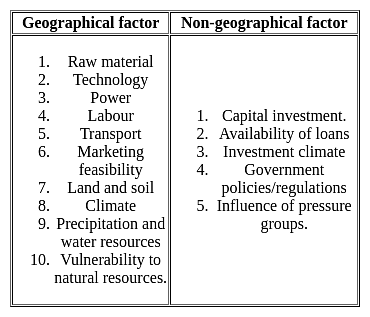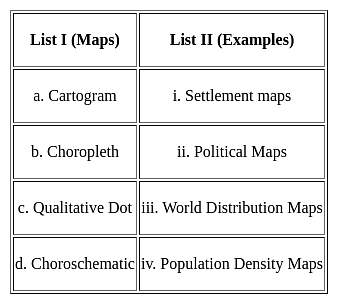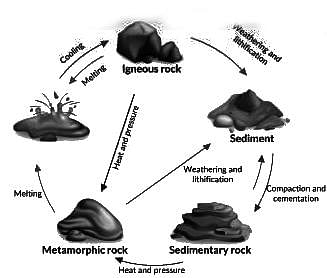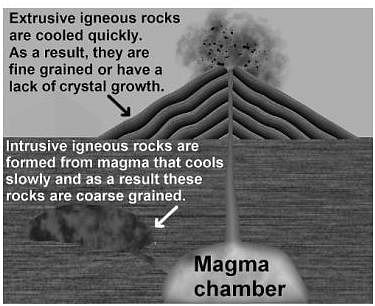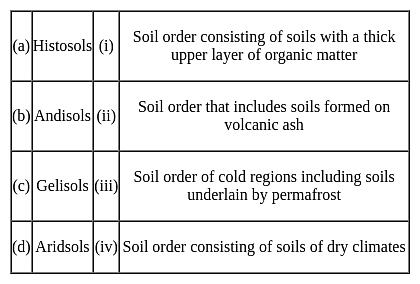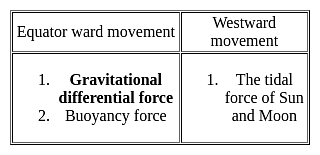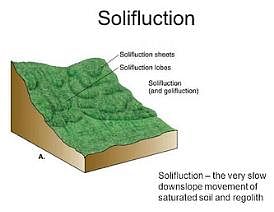UGC NET Paper 2 Geography Mock Test - 8 - UGC NET MCQ
30 Questions MCQ Test UGC NET Mock Test Series 2024 - UGC NET Paper 2 Geography Mock Test - 8
Which one of the following kinds of towns was not planned and developed during the British Rule in India?
The social theory that appeared as the sequel to Behaviouralism is
| 1 Crore+ students have signed up on EduRev. Have you? Download the App |
Which union territory of India had the lowest sex ratio in 2011?
Which one of the following is not a geographical factor favorable for the location of an industry?
Which of the following is not associated with political Geography
A) I. Bowman
B) R. Johnson
C) F. Ratzel
D) H. J. Mackinder
Choose the correct answer from the options given below:
For cotton cultivation which among the following soils is considered most suitable?
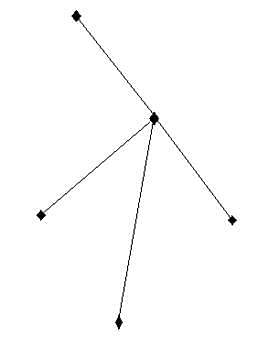
a) To optimise agricultural production
b) To increase farm income
c) To generate more employment
Choose the correct option:
Consider the following statements regarding types of rocks:
1. In general, metallic minerals are found in igneous and metamorphic rock.
2. Igneous and metamorphic rock forms large plateaus.
3. Coal and Petroleum are found in the sedimentary strata.
Select the correct answer using the code given below.
Consider the following statements:
1. Culture adapted to the dictates of Nature.
2. Culture is determined by Social Conditions.
Which of the above statement(s) is correct about Possibilism?Identify the theories/hypotheses that have been put forward to explain the causes of mountain building.
(A) Nebular Hypothesis
(B) Progressive Wave Theory
(C) Contraction Hypothesis
(D) Plate Tectonics Theory
Choose the most appropriate answer from the options given below:Direction: The following item consists of two statements, statement 1 and statement 2. Examine these two statements carefully and select the correct answer from the code given below.
Statement 1:
The salinity of oceans is relatively higher near the equator than in other regions.
Statement 2:
The Equator region has heavy rainfall, high relative humidity and calm air.
Match the following soil orders with their descriptions:
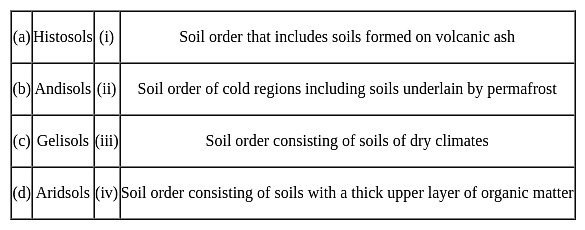
Choose the correct option from those given below:
Which of the following statements are correct about the continental drift theory?
1. Wegner aims to explain the relation between past climatic change and the displacement of the continents
2. The supercontinent Pangea breakdown into Laurasia and Gondwanaland.
3. Differential gravitational forces are responsible for the displacement
Solifluction is a geomorphic process involving a special type of soil flow that is noticed in
_______ are lines drawn on a map to locate, in the plan view, points of equal ground elevation.
The amount of information to be represented on the map depends on
Periodic change towards unusual colder side is called
…………….. type of rainfall is also called 4’O clock rainfall
|
16 docs|120 tests
|


